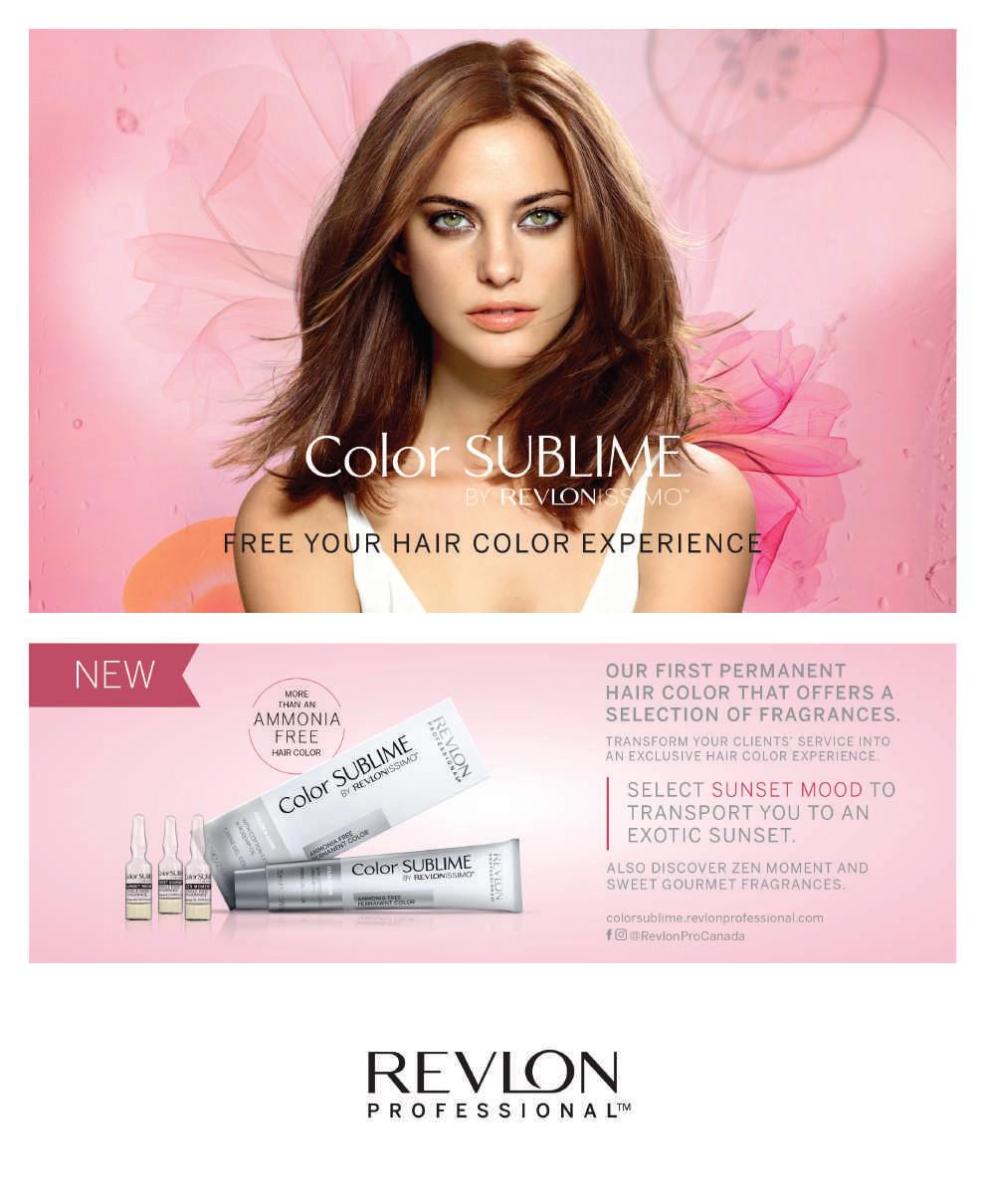
13 minute read
Revel In Beauty Industry Event
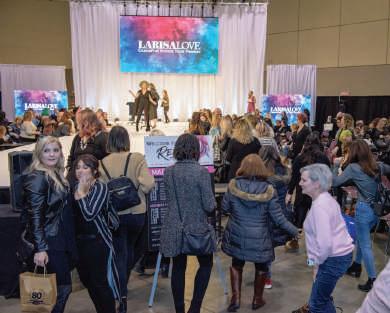
REVEL IN BEAUTY Powered by the Allied Beauty Association
Advertisement

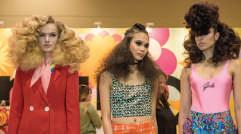

Revel in Beauty made a big impact in the south building of the Metro Toronto Convention Center in March. With over 400 booths, 110 exhibitors 30 international artists lets just say there was something at the show for everyone. The energy in the room carried the show with excitement for the entire two days. The change in the show structure gave everyone a chance to shine. Kudos to Alan Audet and the whole ABA team on a job well done.

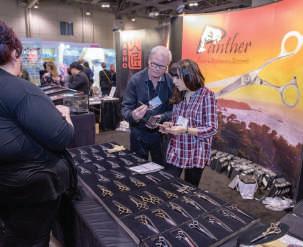


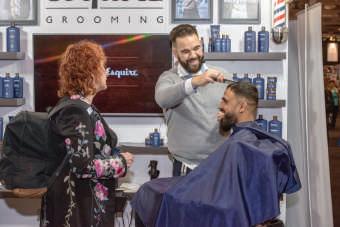

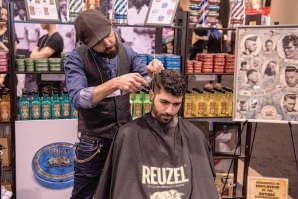
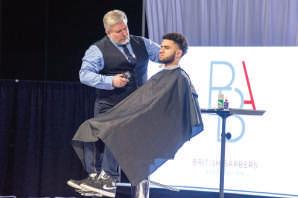

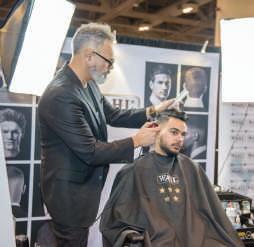
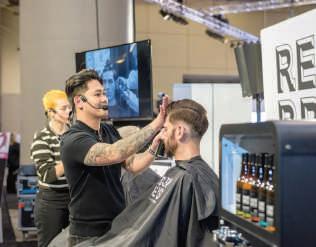

CLIENT CARE ALOPECIA HAS NO FACE
Androgenic alopecia

Alopecia is the medical term for hair loss. The hair loss occurs when the immune system mistakenly attacks the hair follicles. The hair loss can be from your head or from the body. The effects of alopecia can be devastating, causing low self-esteem, depression, social isolation, and emotional upset.
Although hair loss typically happens as we age, the onset of alopecia can be from major surgery, after childbirth, physical or psychological stress, iron deficiencies due to hormones or the side effects of certain medications.
There are different forms of alopecia; such as androgenetic alopecia, alopecia areata, alopecia totalis, alopecia universalis, trichotillomania, and scarring alopecia. The difference amongst the alopecia family is the severity of the baldness.
Androgenetic alopecia can affect males and females at the crown of their head and with a receding hairline. The causes of this form of alopecia may be due to hormonal changes and genetics.
Alopecia areata are random bald patches on the scalp, face or body. This is mainly due an autoimmune disease whereby the immune system attacks the body’s hair follicles.
Alopecia totalis is marked by total hair loss on the scalp and Alopecia universalis is the most severe resulting in hair loss of the whole body. Trichotillomania is a self induced form of hair breakage by twisting, pulling or picking at the hair on the scalp.
Scarring alopecia is when the hair follicles have been replaced by scarring tissue and the hair can no longer grow back.
Although hair loss may be temporary or permanent for some clients here are some tips to help:
1. Early diagnosis – helping your client recognize hair thinning, balding, or hair loss and encourage professional treatments early. 2. Have your client follow-up with a family physician
Alopecia Areata
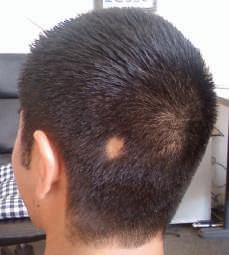
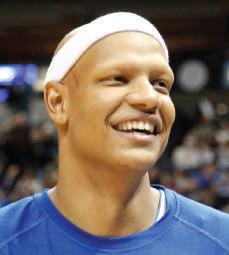
Alopecia totalis
to discuss medication treatments that may include rogaine, finasteride, dutasteride, aldactone, topical corticosteroid preparations or injections of steroid triamcinolone acetonide 3. Refer your client to a specialized centre for onsite treatment of topical applications – treatments like anthralin lotion or steroid prednisone may be used 4. For male clients suggesting a new bald cut to embrace a new look 5. For female clients suggesting the use of quality wigs or hair clips to fill in gaps such as great lengths 6. Teach them how to style their hair accordingly.
Create volume, change their part or a sleek finish 7. Hair transplantation: this involves removing parts of the scalp that are healthy and transplanting them to an area of baldness. 8. Hair products recommendations … Use products that help to stimulate the scalp like tea tree, and peppermint. Remind client that massaging the scalp increases blood flow to the head promoting a healthy scalp, which help with hair growth.
Nobody wants to be faced with hair loss, however it is a rather common condition. Finding treatments, hair solutions, and support for your clients in their local communities can help to relieve symptoms, save hair follicles not damaged, and provide solutions for some.
Resources:
Canadian Dermatology Association
www.dermatology.ca
By Nicole Trotter
Words From The Street
Stephen Williams
Age; 40 Mississauga, ON
At what age did you notice your hair was thinning/balding?
At age 24.
Was balding a genetic factor?
Yes, my older brother is completely bald and my mother experiences alopecia areata.
What helped you transition from having hair to having no hair?
Embracing the fact that I was going to lose it all and shaving it very low.
Did you seek guidance from a family physician?
Yes, my family doctor identified it as male pattern baldness (androgenetic) and described how it would affect me.
Did you try any home treatments?
Yes, I would try hair lotions and creams that promote hair thickness, however the hair in certain areas never grew back.
What advice would you give hair stylists about male and female baldness?
Be supportive, educate their clients, and help them understand the conditions early on. Also help clients to feel comfortable with a new look.
KOFI
Name: Kofi Michael Frempong Occupation: Visual Artist / Community Health Worker Status: Married with Children From: Ghana Community: Jane and Finch Education: Humber College, Design Foundation; Centennial College, Art Fundamentals
Kofi Frempong was born in Ghana and grew up in the Jane and Finch community. At the age of four he and his family made their way from Ghana to Montreal and from Montreal to Toronto. Kofi fell in love with art at the tender age of 5, when he was introduced to line drawing by his father who would draw illustrations of Egyptians. Kofi was fascinated and he knew right away that he had a passion for putting pen to paper. Kofi starting tracing various work, and that is where he developed his true skills. That became a part of his identity.
Kofi didn’t start painting until later in life as the fear of failure overpowered the desire to try. He’s a self-taught artist, however he did go to school for the arts. While he was there, his lack of focus caused his art professors to recommended that he consider another career path. Discouraged, he gave it up for several years but he returned with the confidence he needed to create Kofi’s Art. Kofi conquered the paint brush, creating vibrant and colourful artwork that has circulated the world. He puts together community events such as Freedom Friday, where local artists display live paintings, provide training to up-and-coming visual artists, and guests can enjoy food and music.
He wants to one day own a gallery to showcase and sell his work and the work others. As he knows being an artist can feel very lonely at times, his advice to new artists is to put yourself out there and enjoy the process.
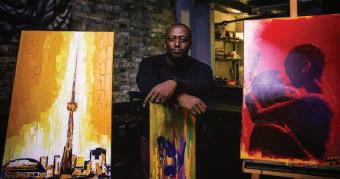
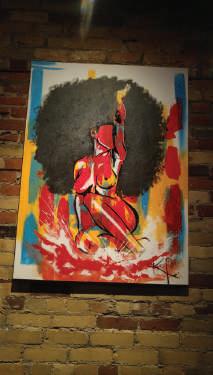
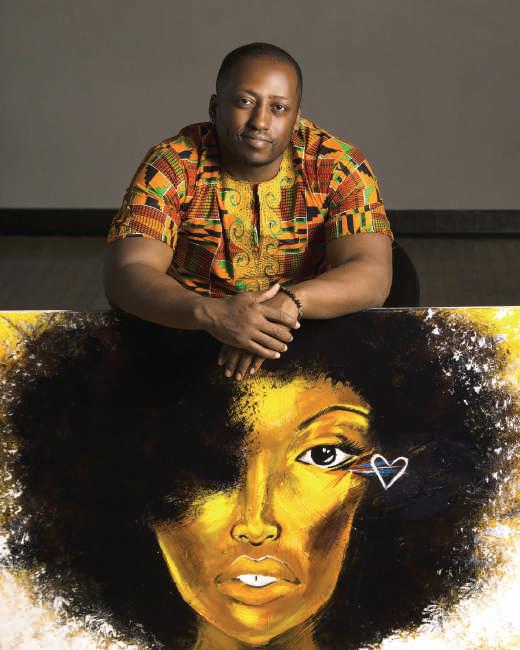

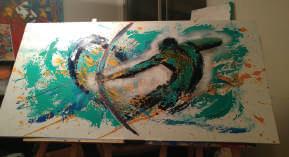
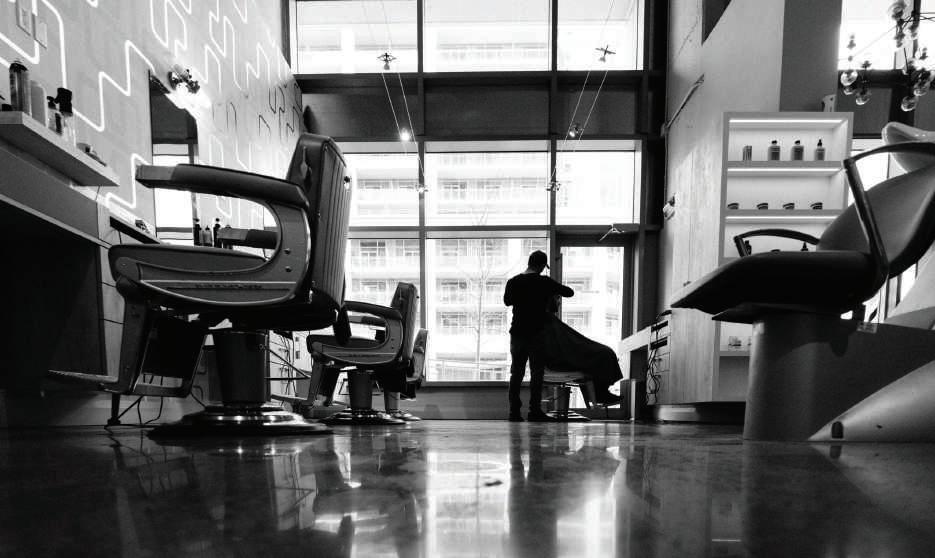
UPPR MGMT
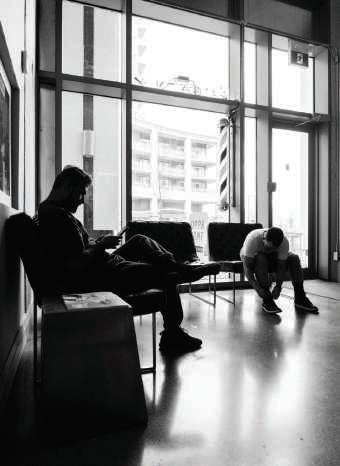
UPPR MGMT is the barber shop for the elite. Where boys leave as men and men leave as gentlemen. A dynamic group of artists that combine their skills with the clippers, scissors and razor.
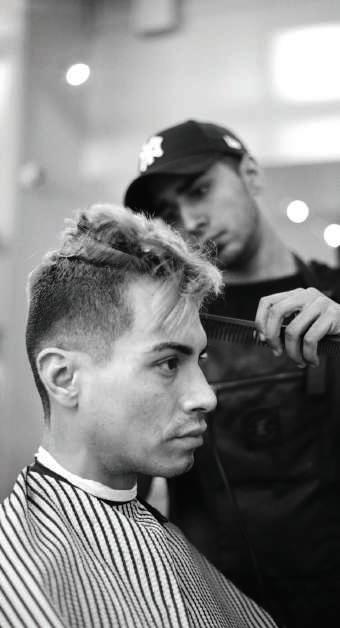
Name: Philip Decouto Years: 1 year in the industry School: Sheridan College Program: HR Business Administration
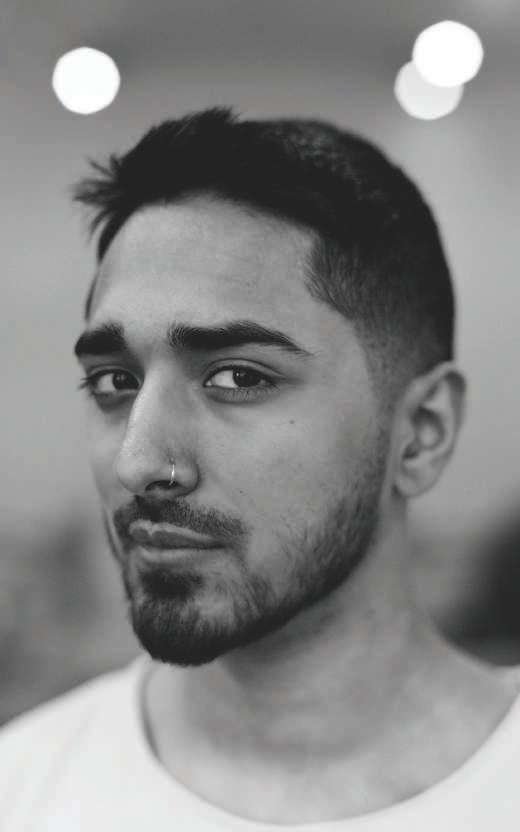
Philip is a trendy, up and coming barber who took on barbering as an after-school job to make some extra cash. As his passion has grown, he is now looking to make waves in the industry. He started at Li Boys Hair Studio in Streetsville, Mississauga and then moved onto the very prestigious UPPR MGMT in Toronto. He has spent most of his time shadowing elite barbers to perfect his craft.
“I love the connections I’m able to make in the industry. Roberto Rago and Chris Evidente, who was trained by Vidal Sassoon, are the most influential stylists I have had the pleasure of working with. I look forward to continuing to attend classes and industry events. I’m a big fan of Josh Lamonaca on Instagram, his technique and attention to detail with both scissors and clippers is amazing.”
YOUNG BUCK
Working with so many people over the years I was shocked to find out that many are not taking full advantage of the tax credits and deductions that are owed to them each year. As a tax-paying citizen in Canada you have a medical tax credit. Woefully underused, a medical tax credit can be utilized to claim your accrued, out-of-pocket medical bills for prescriptions, dental, medical devices and the list goes on. With some deductions, you don’t even need a prescription!
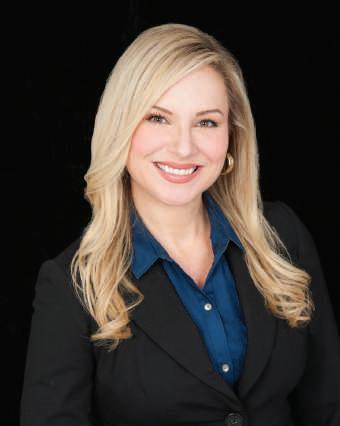
Medical Expenses You can claim medical expenses paid for yourself, your spouse or common-law partner and certain related persons. Medical expenses threshold: For the 2017 tax year, the maximum is 3% of net income or $2,268, whichever is less. For 2018, the maximum is 3% or $2,302, whichever is less. (Apr 2, 2018) Tax Tip Because this is a deduction and not a credit, if you submit your receipts and they are not used because you have already brought your taxes payable down to zero, you will lose the tax deduction. So to avoid losing your eligible deduction, select a 12-month period to maximize the tax credit. The 12-month period may vary from year to year, and you cannot claim the same expense twice. TAX THERAPY
Medical expenses are woefully under-used and under-claimed by Canadians. Read on to find out if your expenses qualify you for a tax deduction
Eligible Expenses The list of eligible medical expenses is extensive and includes payments to medical practitioners, dentists or nurses, public or licensed private hospitals in respect of medical or dental services, additional costs related to the purchase of non-gluten food products, expenses paid for training courses for a tax payer or a related person in respect of the care of a person with a mental or physical impairment, cost of purchased or leased products, equipment or devices that provide relief, assistance or treatment for any illness, cost of blood coagulation monitors for use by individuals who require anticoagulation, therapy, including pricking devices, lancets and test strips; premiums paid to private health insurance plans; expenses incurred after 2013 for specially trained service animals that assist individuals with severe diabetes; remuneration for tutoring persons with learning disabilities, or other mental impairments, if the need for such services is certified by a medical practitioner, and reasonable supplemental expenses for the construction or renovation of a residence to enable a person with a serious, prolonged handicap to have access to this residence, to move about therein and to carry out activities of daily living (please ask me about the Disability Tax Credit (DTC) if you or someone you know suffers from a disability and is not collecting the DTC).
If you are an incorporated business, or self employed, besides the basics, such as product and furniture, you can get a dollar-for-dollar deduction for extended health care for you, you family and your employees – contracted or salaried. As always, should you have questions, please email me! I love to help!

A Free Verse Poem By Ky’ana Sampson-Cox
THE SUN WITHIN YOU
I wonder if the sun ever gets lonely. Too bright for us to look at, too scolding for anything to get close to. Everything she touches, she burns. I wonder what she yearns for, what she cries about. Does she ever get jealous of the moon? Is she like me, getting tired of people relying on her every time she wakes up? So big, so beautiful, I wonder if she knows it. Never letting anybody in because everything she touches, she burns. She keeps her distance to protect others, oblivious to the fact that she is needed. She is loved. The whole world looks up to her.
Dear sun, you are so much more than the pain you think you bring others. Dear sun you are ethereal, nothing in this world compares. Too big, too bright, too beautiful. Hiding behind clouds to dim your lights, trying to be less to make people comfortable because your presence simply makes some uncomfortable.
Guiding others as if you’re not lost yourself, providing hope and giving people reasons to wake up everyday as if you’re not hopelessly counting down the days you can seize to exist.
Dear reader you are the sun, the sun is within you and without you the world would never be the same. To whoever needs to hear it, the world is ready for you and there are many who appreciate you. Even though you don’t believe it nor see it, your light is shining through.



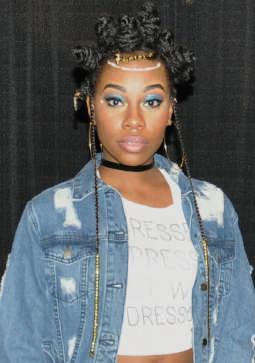
BANTU KNOT
Often, we forget that hair serves a greater purpose than style. The beauty in our art lies in its ability to transcend form and function and create meaning beyond what we imagined. That being said, the modern artist who emulates the beauty of utility and intention are truly brilliant. Some of the most strikingly gorgeous hairstyles that we see are rooted in the tactful, calculated and often sacred methods of ancient cultural groups Historically, hair has protected, strengthened and empowered the likes of queens, kings and warriors; all donning our favourite styles. Having knowledge of the powerful nature of your styles will allow you to bring your artistic visions to life with passion and persistence like never before. You cannot create extraordinary without knowledge of the ordinary.
Protective hairstyles, although worn by some for fashion, are meant to protect natural hair from the wear and tear of daily use. Bantu Knots, also known as Zulu knots, are small coiled buns that are secured against the side of the head. These knots are characterized by their ability to maintain as well as their quick, painless routine. The Zulu people are a Bantu ethnic group in Southern Africa. The word “Bantu” simply means “people,” which is used to describe a number of southern ethnic groups on the continent.
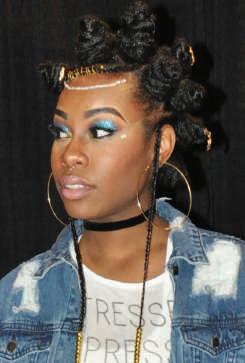
By D’antal Sampson
How To (Natural Hair Tutorial) 1. Shampoo/Wash/condition 2. Moisturize the scalp and hair, comb through using a wide-tooth comb. 3. Take neat sections – big or small, horizontal or vertical. 4. Braid the hair from root to end. 5. Wrap the braid from the base of your section, creating the bun, taking it right up to the top. 6. Pin or tuck.
